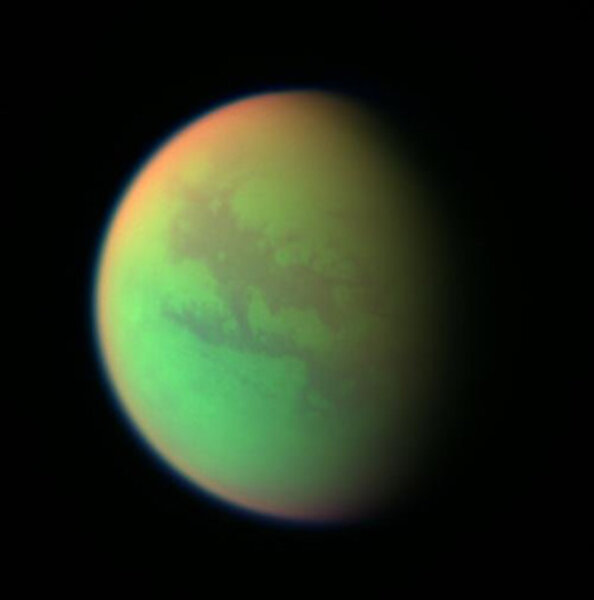In what has to stand as the most provocative pair of results regarding Titan this year, in June two independent teams of scientists found that two important gases – hydrogen and acetylene – were not behaving as models suggested they should. These preliminary results satisfied two of several requirements posited five years ago by a pair of astrobiologists with NASA as clues to the presence of methane-based life on Titan.
One of the two teams examined Cassini data on hydrogen throughout the atmosphere. Models suggested that the hydrogen should be relatively evenly distributed. But Cassini's data showed that hydrogen flows down to the surface, then vanishes. Hydrogen is disappearing into the surface at about the same rate it's being lost to space from Titan's upper atmosphere.
Models also suggested that acetylene should be raining down onto the surface. But Cassini data contain no evidence of it there.
The explanations? According to Chris McKay, an astrobiolgist at NASA's Ames Research Center at Moffett Field, Calif., and an author of the 2005 paper on methane-based life, there are four possible explanations.
But the most provocative involves the presence of organisms that are methane-based, rather than water-based, as terrestrial organisms are.
The results of the two studies are preliminary, he cautioned in a post to the Cassini imaging team's website earlier this year.
"This is still a long way from 'evidence of life.' However, it is extremely interesting," he wrote.





